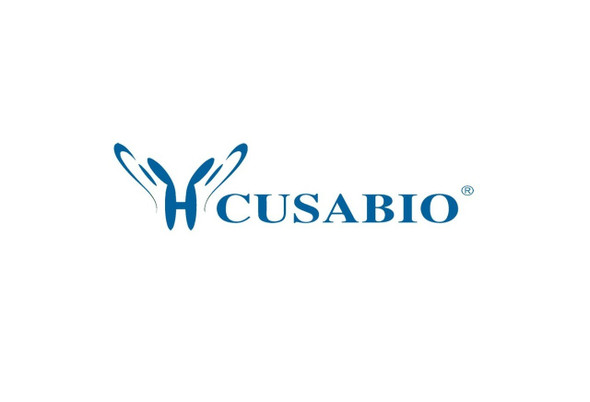Cusabio Human Recombinants
Recombinant Human Transforming growth factor beta activator LRRC33 (NRROS), partial | CSB-BP801264HU
- SKU:
- CSB-BP801264HU
- Availability:
- 3 - 7 Working Days
Description
Recombinant Human Transforming growth factor beta activator LRRC33 (NRROS), partial | CSB-BP801264HU | Cusabio
Alternative Name(s): Leucine-rich repeat-containing protein 33 LRRC33
Gene Names: NRROS
Research Areas: Others
Organism: Homo sapiens (Human)
AA Sequence: WRNRSGTATAASQGVCKLVGGAADCRGQSLASVPSSLPPHARMLTLDANPLKTLWNHSLQPYPLLESLSLHSCHLERISRGAFQEQGHLRSLVLGDNCLSENYEETAAALHALPGLRRLDLSGNALTEDMAALMLQNLSSLRSVSLAGNTIMRLDDSVFEGLERLRELDLQRNYIFEIEGGAFDGLAELRHLNLAFNNLPCIVDFGLTRLRVLNVSYNVLEWFLATGGEAAFELETLDLSHNQLLFFPLLPQYSKLRTLLLRDNNMGFYRDLYNTSSPREMVAQFLLVDGNVTNITTVSLWEEFSSSDLADLRFLDMSQNQFQYLPDGFLRKMPSLSHLNLHQNCLMTLHIREHEPPGALTELDLSHNQLSELHLAPGLASCLGSLRLFNLSSNQLLGVPPGLFANARNITTLDMSHNQISLCPLPAASDRVGPPSCVDFRNMASLRSLSLEGCGLGALPDCPFQGTSLTYLDLSSNWGVLNGSLAPLQDVAPMLQVLSLRNMGLHSSFMALDFSGFGNLRDLDLSGNCLTTFPRFGGSLALETLDLRRNSLTALPQKAVSEQLSRGLRTIYLSQNPYDCCGVDGWGALQHGQTVADWAMVTCNLSSKIIRVTELPGGVPRDCKWERLDLGL
Source: Baculovirus
Tag Info: N-terminal 10xHis-tagged and C-terminal Myc-tagged
Expression Region: 19-650aa
Sequence Info: Extracellular Domain
MW: 73.5 kDa
Purity: Greater than 90% as determined by SDS-PAGE.
Relevance: Negative regulator of reactive oxygen species (ROS) that limits ROS production by phagocytes during inflammatory response, thereby playing a role during host defense. Acts via direct interaction with CYBB/NOX2 monomer that impairs interaction between CYBB/NOX2 and CYBA/p22-phox and formation of a stable NOX2 complex. May play a critical role in desensitizing TLR signaling through inhibition of Toll-like receptor-mediated NF-kappa-B activation and cytokine production.
Reference: "The secreted protein discovery initiative (SPDI), a large-scale effort to identify novel human secreted and transmembrane proteins: a bioinformatics assessment." Clark H.F., Gurney A.L., Abaya E., Baker K., Baldwin D.T., Brush J., Chen J., Chow B., Chui C., Crowley C., Currell B., Deuel B., Dowd P., Eaton D., Foster J.S., Grimaldi C., Gu Q., Hass P.E.Gray A.M. Genome Res. 13:2265-2270(2003)
Storage: The shelf life is related to many factors, storage state, buffer ingredients, storage temperature and the stability of the protein itself. Generally, the shelf life of liquid form is 6 months at -20?/-80?. The shelf life of lyophilized form is 12 months at -20?/-80?.
Notes: Repeated freezing and thawing is not recommended. Store working aliquots at 4? for up to one week.
Function: Negative regulator of reactive oxygen species (ROS) that limits ROS production by phagocytes during inflammatory response, thereby playing a role during host defense. Acts via direct interaction with CYBB/NOX2 monomer that impairs interaction between CYBB/NOX2 and CYBA/p22-phox and formation of a stable NOX2 complex (By similarity). May play a critical role in desensitizing TLR signaling through inhibition of Toll-like receptor-mediated NF-kappa-B activation and cytokine production.
Involvement in disease:
Subcellular Location: Cell membrane, Single-pass type I membrane protein, Endoplasmic reticulum membrane, Single-pass type I membrane protein
Protein Families:
Tissue Specificity: Ubiquitous, with high level of expression found in bone marrow, thymus, liver, lung, intestine and spleen.
Paythway:
Form: Liquid or Lyophilized powder
Buffer: If the delivery form is liquid, the default storage buffer is Tris/PBS-based buffer, 5%-50% glycerol. If the delivery form is lyophilized powder, the buffer before lyophilization is Tris/PBS-based buffer, 6% Trehalose, pH 8.0.
Reconstitution: We recommend that this vial be briefly centrifuged prior to opening to bring the contents to the bottom. Please reconstitute protein in deionized sterile water to a concentration of 0.1-1.0 mg/mL.We recommend to add 5-50% of glycerol (final concentration) and aliquot for long-term storage at -20?/-80?. Our default final concentration of glycerol is 50%. Customers could use it as reference.
Uniprot ID: Q86YC3
HGNC Database Link: HGNC
UniGene Database Link: UniGene
KEGG Database Link: KEGG
STRING Database Link: STRING
OMIM Database Link: OMIM










